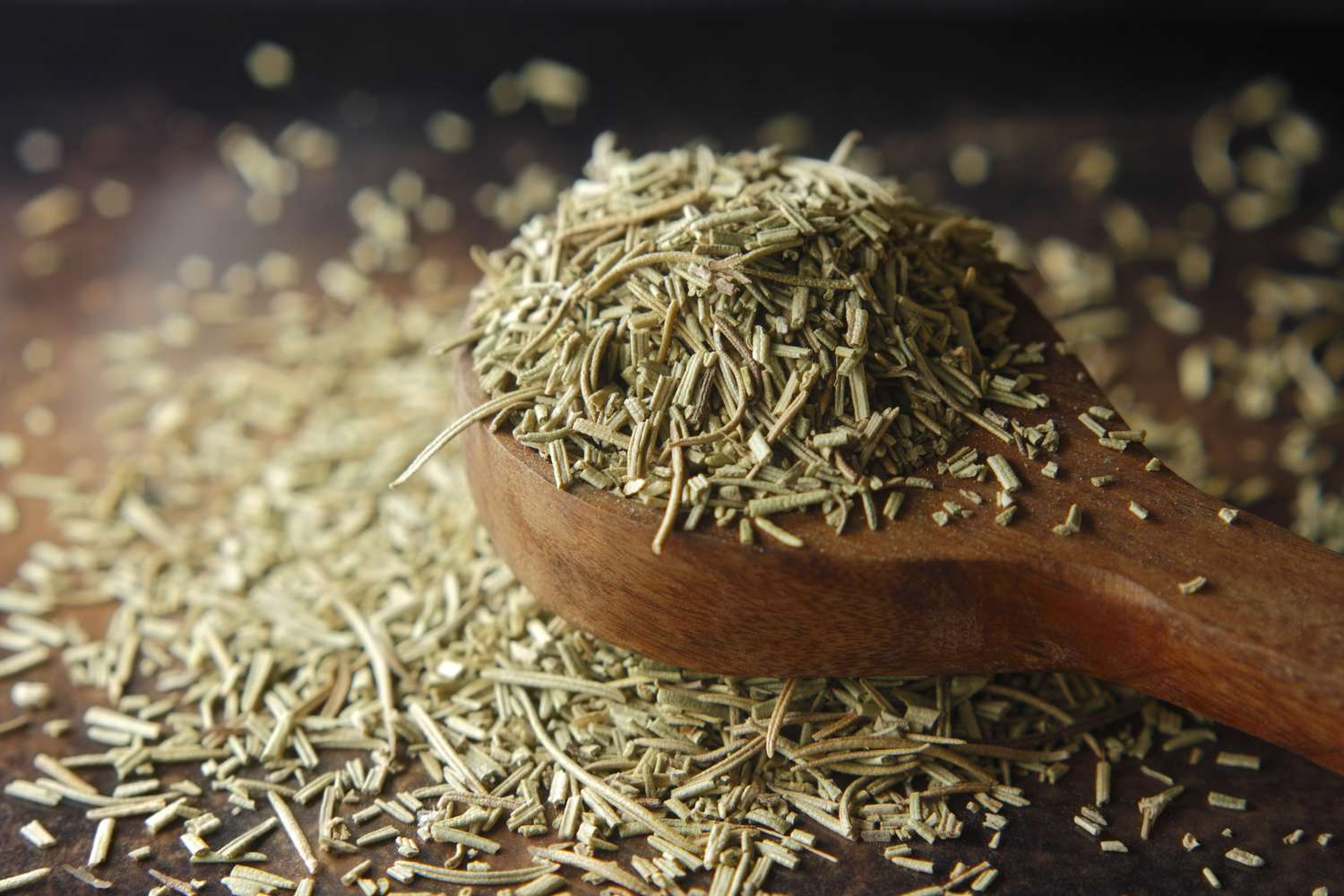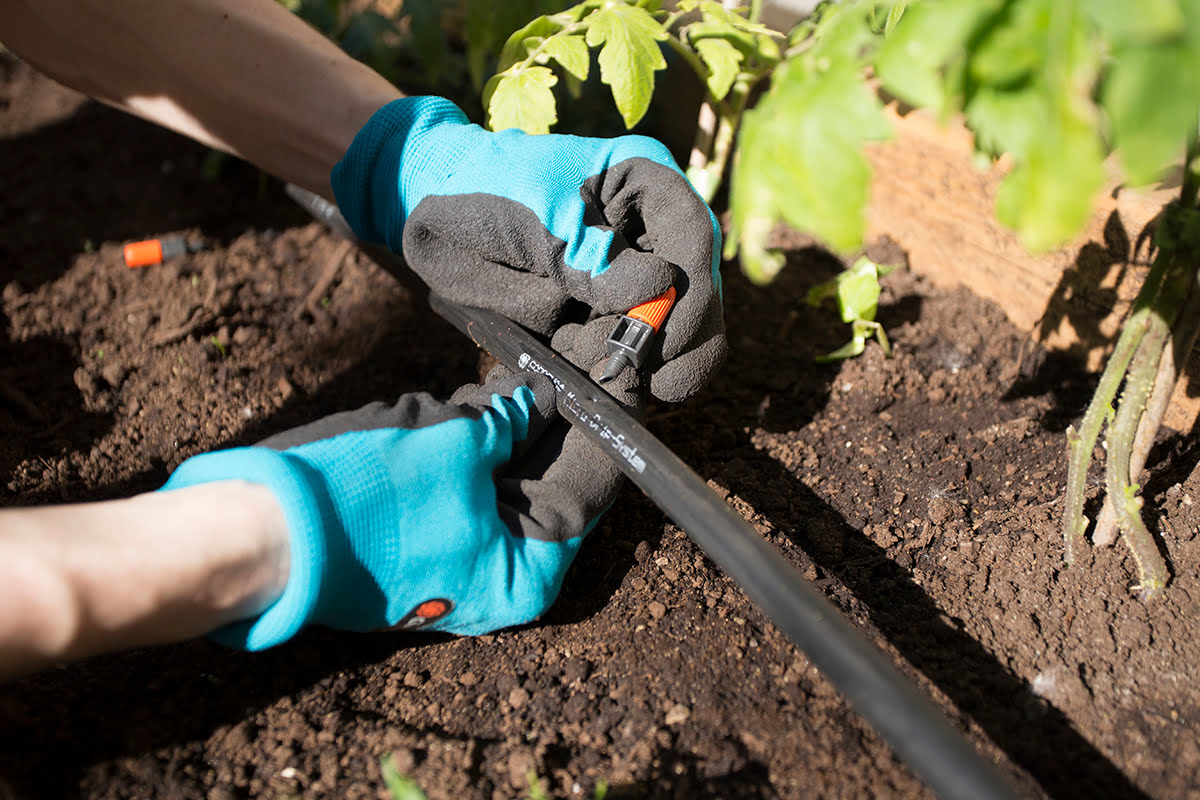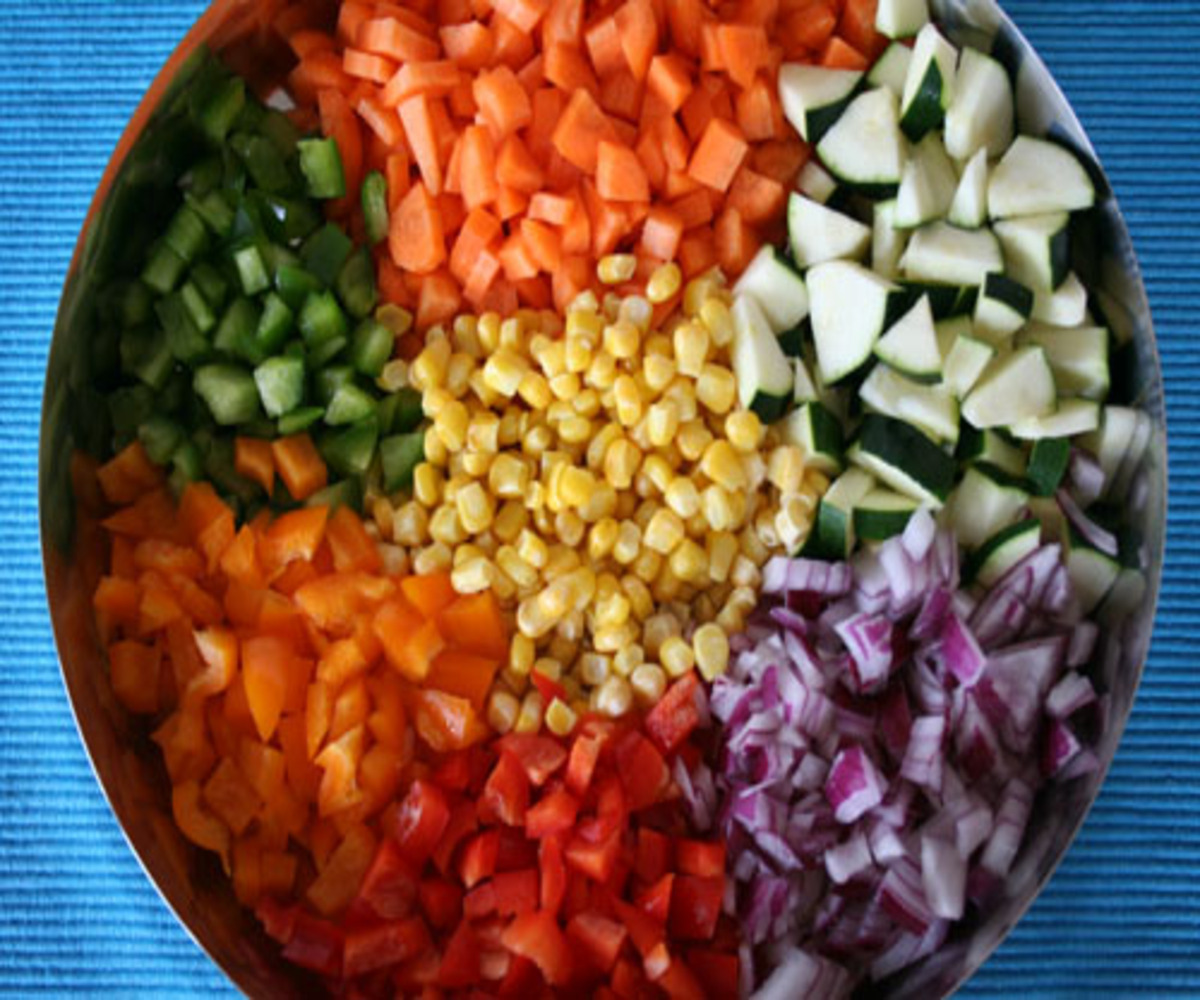Home>Gardening News and Trends>Latest News>When To Add Rosemary To Sourdough


Latest News
When To Add Rosemary To Sourdough
Published: January 31, 2024
Discover the latest news on when to add rosemary to your sourdough for a flavorful twist. Learn the best timing and techniques for incorporating this aromatic herb into your bread.
(Many of the links in this article redirect to a specific reviewed product. Your purchase of these products through affiliate links helps to generate commission for Chicagolandgardening.com, at no extra cost. Learn more)
Table of Contents
Introduction
Sourdough bread has long been cherished for its distinct tangy flavor and chewy texture, making it a beloved staple in many households. As bakers continue to explore innovative ways to elevate this traditional bread, the addition of rosemary has emerged as a delightful enhancement. Rosemary, with its woody fragrance and robust flavor, brings a unique dimension to sourdough, captivating the palate with its earthy notes.
In this article, we delve into the art of incorporating rosemary into sourdough, exploring the nuances of this aromatic herb and its harmonious union with the sourdough fermentation process. From unraveling the benefits of this marriage to offering practical tips for infusing sourdough with the essence of rosemary, we aim to equip both novice and seasoned bakers with the knowledge and inspiration to embark on a flavorful sourdough journey.
Join us as we unravel the secrets of integrating rosemary into sourdough, elevating this time-honored bread to new heights of culinary delight.
Understanding Rosemary
Rosemary, scientifically known as Rosmarinus officinalis, is an evergreen herb revered for its aromatic foliage and culinary versatility. Native to the Mediterranean region, this perennial herb boasts needle-like leaves and a woody stem, exuding a distinctive fragrance that evokes images of sun-drenched hillsides. Renowned for its robust flavor profile, rosemary is a cherished component in various cuisines, adding depth and character to an array of dishes.
From a sensory standpoint, rosemary offers a harmonious blend of earthiness, warmth, and a hint of pine, which lends a delightful complexity to culinary creations. Its assertive flavor profile makes it an ideal companion for sourdough, as it can hold its own amidst the tangy notes of the fermented dough. Furthermore, rosemary is rich in antioxidants and has been associated with potential health benefits, making it a compelling addition to sourdough from both a flavor and nutritional standpoint.
As we explore the integration of rosemary into sourdough, it’s essential to appreciate the unique characteristics of this herb and its potential to elevate the sensory experience of savoring freshly baked bread. The next section will delve into the benefits of incorporating rosemary into sourdough, shedding light on how this herb can transform the very essence of this beloved bread.
Benefits of Adding Rosemary to Sourdough
The marriage of rosemary and sourdough yields a myriad of benefits that extend beyond mere flavor enhancement. Firstly, the aromatic essence of rosemary infuses the sourdough with a delightful fragrance, tantalizing the senses even before the first bite. This olfactory allure sets the stage for a multisensory culinary experience, where the aroma of freshly baked rosemary-infused sourdough beckons with irresistible allure.
From a flavor perspective, rosemary introduces a nuanced complexity to sourdough, intertwining its distinctive earthy and pine-like notes with the tangy profile of the fermented dough. This amalgamation of flavors creates a symphony on the palate, offering a depth of taste that transcends the ordinary. Additionally, the herb’s robust flavor profile ensures that it can withstand the rigors of the sourdough fermentation process, retaining its essence and imparting a lasting impression on each slice of bread.
Beyond sensory gratification, rosemary brings potential health benefits to the table. This herb is known for its rich concentration of antioxidants, which have been linked to various health-promoting properties. By infusing sourdough with rosemary, bakers can impart an additional layer of nutritional value to this beloved bread, aligning with the growing emphasis on wellness and wholesome eating.
Moreover, the antimicrobial properties of rosemary may contribute to the preservation of sourdough, potentially extending its shelf life while inhibiting the growth of undesirable microorganisms. This natural preservation aspect aligns with the artisanal nature of sourdough, where traditional methods and natural ingredients converge to create a product that is not only delectable but also imbued with a sense of wholesome authenticity.
As we unravel the benefits of incorporating rosemary into sourdough, it becomes evident that this herb transcends its role as a mere flavoring agent, emerging as a multifaceted contributor to the sensory, nutritional, and artisanal dimensions of sourdough bread.
When to Add Rosemary to Sourdough
The timing of adding rosemary to sourdough is a critical consideration that can significantly impact the final flavor and aroma of the bread. To harness the full essence of rosemary and ensure its seamless integration into the sourdough, bakers must strategically incorporate this herb at the optimal stage of the bread-making process.
One opportune moment to introduce rosemary is during the initial mixing of the sourdough ingredients. By finely chopping fresh rosemary and incorporating it into the flour and water mixture, the herb becomes uniformly distributed throughout the dough, allowing its flavors to meld with the other components from the onset of the fermentation process. This method ensures a pervasive infusion of rosemary’s essence, resulting in a bread with a consistent and well-rounded herbal flavor.
Alternatively, bakers may opt to add rosemary during the bulk fermentation stage, where the dough undergoes its primary rise. This approach allows the herb to permeate the dough as it develops, imparting its aromatic qualities and flavor nuances during this crucial period of fermentation. By gently folding the rosemary into the dough during the bulk fermentation, bakers can ensure that the herb becomes intricately woven into the fabric of the sourdough, yielding a harmonious amalgamation of flavors and aromas.
Another method involves incorporating rosemary just before shaping the dough for its final proof. This late addition can intensify the herb’s presence in the finished bread, offering pronounced bursts of rosemary with each bite. Moreover, sprinkling whole rosemary leaves on the surface of the shaped dough prior to baking can create an aesthetically pleasing presentation while infusing the crust with fragrant herbal notes.
Ultimately, the decision of when to add rosemary to sourdough hinges on the desired intensity and distribution of the herb’s flavor and aroma. By carefully selecting the stage of incorporation, bakers can tailor the sensory profile of the sourdough to align with their creative vision, resulting in a bread that embodies the essence of rosemary in every delightful aspect.
Tips for Using Rosemary in Sourdough
Integrating rosemary into sourdough requires a nuanced approach to ensure that the herb’s essence is artfully woven into the fabric of the bread. To achieve an exemplary fusion of flavors and aromas, bakers can leverage the following tips when incorporating rosemary into their sourdough creations:
- Select Fresh Rosemary: Opt for fresh rosemary sprigs, as they exude the herb’s optimal fragrance and flavor. Fresh rosemary can be finely chopped to facilitate its dispersion throughout the dough, ensuring a uniform infusion of its aromatic essence.
- Balance the Quantity: Exercise restraint when adding rosemary to sourdough, as its potent flavor can overpower the bread if used excessively. A conservative approach, especially for the initial attempts, allows bakers to gauge the ideal quantity that complements the sourdough without overshadowing its inherent characteristics.
- Consider Complementary Ingredients: Pair rosemary with complementary ingredients such as olive oil, garlic, or sea salt to accentuate its herbal allure. Infusing these elements into the sourdough alongside rosemary can yield a harmonious interplay of flavors, elevating the bread’s overall sensory appeal.
- Experiment with Infusion Techniques: Explore diverse infusion techniques, such as steeping rosemary in warm water or oil before incorporating it into the sourdough, to extract and impart the herb’s essence effectively. This experimentation can yield nuanced variations in flavor and aroma, allowing bakers to tailor the sensory profile of the bread to their preferences.
- Adapt to Baking Conditions: Account for the potential impact of heat on rosemary’s flavor and aroma during the baking process. Monitoring the bread closely as it bakes enables bakers to achieve the desired balance of herbal notes without compromising the integrity of the sourdough crust.
- Showcase Artistic Presentation: Embrace the aesthetic dimension of using rosemary in sourdough by adorning the shaped dough with whole rosemary leaves before baking. This not only enhances the visual allure of the bread but also imparts an enticing herbal fragrance to the crust.
By integrating these tips into their sourdough-making endeavors, bakers can masterfully harness the essence of rosemary, infusing their creations with a captivating tapestry of flavors and aromas that elevate the humble sourdough to a culinary masterpiece.
Conclusion
As we conclude our exploration of the symbiotic relationship between rosemary and sourdough, it becomes evident that the integration of this aromatic herb transcends mere culinary experimentation. The infusion of rosemary into sourdough represents a harmonious convergence of tradition, innovation, and sensory delight, offering a sensory journey that captivates the palate and the soul.
From understanding the multifaceted allure of rosemary to unraveling its potential benefits in sourdough, we have embarked on a flavorful odyssey that celebrates the artistry of bread-making. The strategic timing of adding rosemary to sourdough and the thoughtful application of infusion techniques underscore the meticulous craftsmanship that underpins this culinary fusion.
Furthermore, the tips for using rosemary in sourdough serve as a compass for bakers seeking to embark on their own creative expeditions, guiding them toward a destination where the aromatic essence of rosemary intertwines seamlessly with the soulful tang of sourdough.
As bakers embrace the art of infusing sourdough with rosemary, they partake in a timeless tradition that honors the alchemy of flavors and the pursuit of sensory excellence. Each slice of rosemary-infused sourdough becomes a testament to this union, inviting enthusiasts to savor the rich tapestry of aromas and flavors that unfold with every indulgent bite.
In essence, the integration of rosemary into sourdough represents a celebration of culinary ingenuity, where the humble act of bread-making transcends convention to embrace the symphony of flavors and aromas that elevate the everyday to the extraordinary.
May this exploration inspire bakers and enthusiasts alike to embark on their own odyssey of flavor, infusing their sourdough creations with the timeless allure of rosemary, and savoring the artistry that unfolds with each tantalizing loaf.





